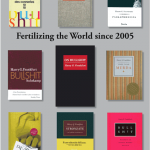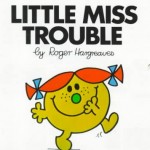Whenever I listen to the song “Cavern” off of Phish’s album, A Picture of Nectar, I add the following line which seems so fitting to me that I am incredulous every time I realize that it is my own invention and not in the song (the lyrics in bold caps are mine):
In summing up, the moral seems
A little bit obscure…
Give the director a serpent deflector
a BULLSHIT detector, a ribbon reflector
a cushion convector, a pitcher of nectar
a virile dissector, a hormone collector
 So, what does this little anecdote have to do with troublemaking and truth-telling? Not much except for being my way of (not so) cleverly introducing the topic of this entry: Harry G. Frankfurt’s pithy treatise On Bullshit. This book came out in 2005 and I got it for my birthday shortly thereafter. Every year I sit down to read it and then, in the midst of Frankfurt’s philoso-speak, my brain starts to melt, so I move onto something else. Well, today was the day–I finally finished the whole thing–all 67 extremely small pages of it! And, you know what? I liked it.
So, what does this little anecdote have to do with troublemaking and truth-telling? Not much except for being my way of (not so) cleverly introducing the topic of this entry: Harry G. Frankfurt’s pithy treatise On Bullshit. This book came out in 2005 and I got it for my birthday shortly thereafter. Every year I sit down to read it and then, in the midst of Frankfurt’s philoso-speak, my brain starts to melt, so I move onto something else. Well, today was the day–I finally finished the whole thing–all 67 extremely small pages of it! And, you know what? I liked it.
In addition to the fact that Frankfurt does a philosophical analysis of a *fun* term like bullshit, this book is great for a couple of reasons. First, Frankfurt’s main aim is to give serious critical and intellectual attention to a term (and a phenomenon) that pervades our lives–one might say we are often knee-deep in it–but that we don’t know much about. He writes:
We have no clear understanding of what bullshit is, why there is so much of it, or what functions it serves. And we lack a conscientiously developed appreciation of what it means to us. In other words, we have no theory. I propose to begin the development of a theoretical understanding of bullshit…(1-2).
Frankfurt’s description here reminds me of my own thinking about troublemaking. It is a term that gets bandied about all of the time, but we don’t spend enough time on what it exactly means or how it is actually done. Giving serious attention to troublemaking (much like Frankfurt’s serious attention to bullshit) is what I am aiming to do in this blog.
Second, one of Frankfurt’s key arguments in this book involves distinguishing lying from bullshitting. According to him, liars are aware of and pay attention to the truth, they just don’t want to tell it. In contrast, bullshitters, who seem to be far worse than liars who at least demonstrate some engagement with the truth, aren’t concerned with what is true or false. They are indifferent to all of it.
Bullshitting is not about deliberately eschewing truth and embracing falsity; it is about fakery (“For the essence of bullshit is not that it is false but that it is phony,” 47.) And it is about not CARING. Ah ha! A connection to my own thinking about taking care as being a form of staying in trouble (see here or here for more). Consider the following statements by Frankfurt:
For the bullshitter, however, all bets are off: he is neither on the side of the true nor the side of the false. His eye is not on the facts at all, as the eyes of the honest man and of the liar are, except insofar as they may be pertinent to his interest in getting away with what he says. He does not CARE whether the things he says describe reality correctly. He just picks them out, or makes them up, to suit his purpose (57).
So, the bullshitter is more concerned with his own self-interest than the truth…
Someone who lies and someone who tells the truth are playing on opposite sides, so to speak, in the same game. Each responds to the facts as he understands them, although the response of the one is guided by the authority of the truth, while the response of the other defies that authority and refuses to meet its demands. The bullshitter ignores these demands altogether. He does not reject the authority of the truth, as the liar does, and oppose himself to it. He pays no attention to it all. By virtue of this, bullshit is the greater enemy of the truth than lies are (61).
The bullshitter doesn’t play by our rules and is therefore free to not follow them. Is it true? False? Who cares is her answer.
The greater enemy of truth (we will have to leave an exploration of what truth means for another entry) is bullshit not lying because not caring about the truth is far worse than merely distorting it in order to reject it. Frankfurt is arguing for the importance of caring about ideas/things by being attentive to them. Hmmm….that sounds like the goal of troublemaking: to care by giving serious attention and by critically engaging. So, does that mean that one of the important tasks of the troublemaker/troublestayer and of making trouble/staying in trouble is identifying and challenging bullshit? That’s right–the troublemaker is a BULLSHIT DETECTOR.
Now that doesn’t mean making trouble isn’t also about truth-telling. But, it indicates that troublemakers/troublestayers are more concerned with bullshit than lies. What is truth? What is a lie? How do we determine these and on what basis of “fact” do we authenticate ideas/stories/events? Much more to come on this topic…


